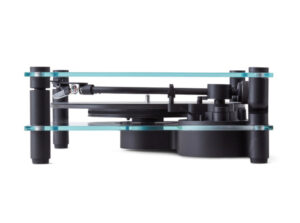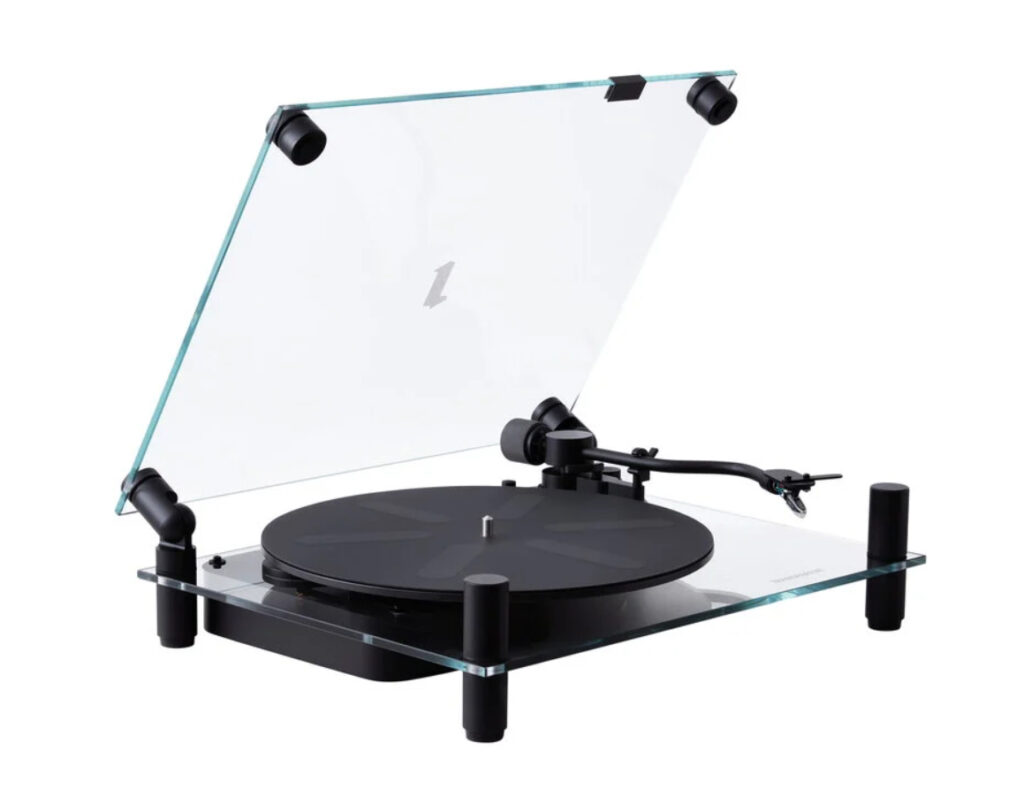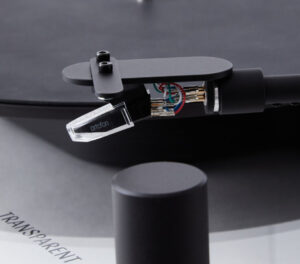
In an age of sonic over-saturation and disposable design, Transparent—the Scandinavian audio design studio known for its signature glass-encased speakers—has taken a defiant step back. But not backward. With the release of its Transparent Turntable, the brand has created a product that is simultaneously nostalgic and futuristic, tactile and ethereal, analog and wireless. It’s not just a turntable—it’s a philosophy you can hear and see.
Where many modern audio brands have chosen to hide their engineering beneath layers of synthetic casing and programmed convenience, Transparent has chosen instead to reveal. Its name isn’t metaphorical. The company builds sound systems out of tempered glass and aluminum, favoring openness over opacity, design as dialogue over decoration. With the Transparent Turntable, they’ve extended that same ethos to the sacred domain of vinyl—a medium that has long been fetishized by purists, co-opted by stylists, and misunderstood by tech futurists.
What emerges is a turntable that doesn’t merely revisit the past—it reinterprets it.
Form Follows Frequency: The Design Language of Transparency
At first glance, the Transparent Turntable doesn’t scream for your attention. It hums. It rests quietly in the room like a shard of sculpture or a device unearthed from a utopian future—entirely transparent, utterly composed. The base is made from black anodized aluminum, minimal and matte. The platter and cover are made of tempered glass, not as a gimmick but as a gesture toward permanence.
There are no flashing lights, no oversized logos, no gimmicky retro stylings. Instead, there is a restraint that feels radical. This is design by reduction—a subtraction of all the unnecessary to arrive at the essential. The Transparent Turntable looks the way good music sounds: clear, intentional, resonant.
But the minimalist aesthetic isn’t just about looks. It’s a statement about material honesty. In a culture where most consumer tech is sheathed in plastic and opaque mystery, Transparent invites us to observe the mechanics. The belt-drive motor is partially visible. The tonearm, featherlight and delicately suspended, is a study in balance. Even the belt itself—the most mechanical part of the system—is treated like an aesthetic gesture, not something to be hidden away.
This act of radical visibility invites a deeper form of engagement. It dares the listener to pay attention—not just to what they hear, but to how it’s being produced.
Analog Soul, Digital Heart
Yet for all its reverence to traditional form, the Transparent Turntable is not a slave to nostalgia. It fully embraces modern functionality, most notably through Bluetooth streaming capability. At the press of a button, users can bypass vinyl altogether and beam music from their smartphone or laptop directly into the system—no wires, no hassle.
This duality—the ability to play both analog and digital—positions the Transparent Turntable as a kind of bridge between generations of listeners. It doesn’t shame the new nor fetishize the old. It simply hosts both, elegantly and seamlessly.
Pairing with Transparent’s own signature speakers, the synergy is flawless. The tonal quality remains warm, detailed, and clean. But the turntable is also universal—compatible with other brands and audio systems. Whether you’re running a vintage amp or a contemporary soundbar, the Transparent Turntable integrates effortlessly.
And yet, despite its technological versatility, the machine never loses its soul. The moment the stylus drops into the groove of a record, there’s a hum of history, a reverberation of ritual. This isn’t just another Bluetooth device. It’s a musical instrument that performs in silence and sings in fidelity.
Sustainability as Structure
Perhaps the most radical quality of the Transparent Turntable isn’t its glass or its Bluetooth—it’s its repairability. In an age where tech obsolescence is designed, Transparent is one of the few brands engineering against disposability.
The turntable is modular—meaning every part, from the motor to the cartridge to the Bluetooth module, can be individually removed, replaced, or upgraded. No proprietary screws. No sealed compartments. No labyrinth of wires designed to dissuade curiosity.
This model is as much about right to repair as it is about aesthetic purity. Transparent doesn’t want you to throw this product away when it breaks. They want you to open it. Fix it. Understand it. Own it in the deepest sense.
This is what design theorist John Thackara once called a “narrative of care”—a relationship to objects that extends beyond consumption and into stewardship. Transparent isn’t selling a product. They’re inviting a practice.
In doing so, they challenge the assumptions of our attention economy. That newer is better. That replacement is simpler than repair. That convenience is a virtue. The Transparent Turntable proposes a slower, more thoughtful engagement with sound—and the systems that make it.
The Ritual of Listening, Reimagined
To operate the Transparent Turntable is to experience a return to the ritual of listening. In an era when music is streamed passively—reduced to background noise, algorithmic fodder, or TikTok fragment—the act of placing a record on the platter and lowering the tonearm becomes sacred.
And yet, unlike traditional record players that often feel clunky or intimidating to the uninitiated, the Transparent Turntable is welcoming. Its controls are intuitive. Its build is accessible. There is no learning curve. You’re not performing audiophile theater. You’re simply engaging—quietly, consciously—with the act of playing music.
This is a democratization of analog joy. The product doesn’t gatekeep. It invites.
A New Kind of Luxury
Luxury, in the 21st century, is being redefined. No longer is it solely about opulence or exclusivity. Increasingly, it’s about intention, sustainability, and aesthetics that age gracefully.
The Transparent Turntable sits firmly in this emerging space. It is luxurious not because it’s expensive (though it is premium), but because it respects your time, your attention, and your values. It is built to last, not just materially but visually. This is not a product that will go out of style in two years. It is, quite literally, timeless.
In fact, its transparency becomes a metaphor for the ethics of design. Nothing is hidden. Every screw, every spindle, every LED is visible and accountable. There is a kind of trust built into its physical language: no gimmicks, no distractions—just clarity.
Transparent in Context: A Brand Philosophy
To fully appreciate the Transparent Turntable, one must understand the brand behind it. Transparent was founded on the belief that audio systems should be designed like furniture, built like architecture, and maintained like bicycles. Their products reject the planned obsolescence of traditional consumer electronics in favor of systems thinking and open-ended evolution.
Every product they release—be it a small speaker, a large one, or this turntable—is part of a modular ecosystem. It’s an invitation to assemble your own audio environment the way you might curate a room or construct a soundscape.
More than a design company, Transparent is a design philosophy. One that values material honesty, minimalism, and environmental responsibility without ever sacrificing technical excellence.
And in that sense, the Transparent Turntable becomes more than a product. It becomes an ambassador of a new way of living with technology—where beauty, function, and ethics align.
Listening Forward
As we move deeper into a decade defined by ecological anxiety, screen fatigue, and the erosion of physical experience, the Transparent Turntable feels like a clarifying gesture. It doesn’t offer more features—it offers better presence. It doesn’t chase trends—it reasserts the fundamentals.
The future of sound is not necessarily about higher fidelity or deeper bass. It’s about the quality of engagement. The Transparent Turntable doesn’t claim to solve the world’s problems. But it does suggest a better way to listen.
Not just to music, but to objects, to systems, and to the spaces we inhabit.
The Hustle
In the end, the Transparent Turntable is not about spectacle. It’s about essence. It respects tradition without replicating it, embraces technology without fetishizing it, and invites sustainability not as branding, but as baseline.
To use it is to return to the joy of conscious listening. To own it is to make a quiet but decisive statement: that beauty matters, that function should endure, and that transparency—literal and philosophical—is more than an aesthetic. It’s a commitment.
And in a world increasingly cluttered by noise, both sonic and visual, that commitment rings clear.
No comments yet.








